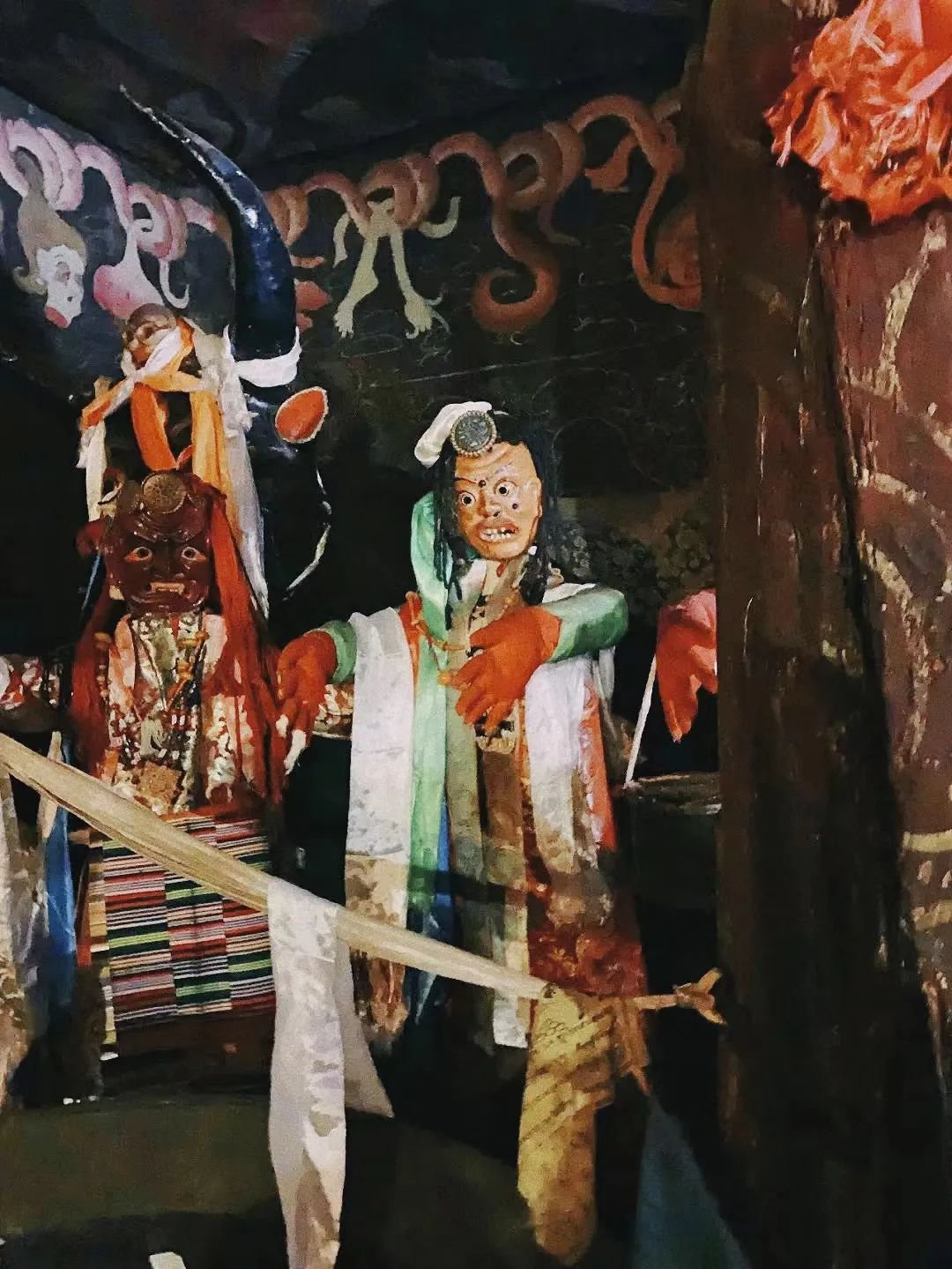Legend has it that Tibet is replete with mysteries and tales of taming and quelling demons on its snowy plateau. When visiting Lhasa, one fortunate encounter with a vendor at Chongsekang Market may grant you the opportunity to hear the tale of Tibet’s renowned Witch of Sakya.
Originally prairie herdsmen girls, they later became aristocratic beauties confined to the boudoir. However, their lives were ensnared by traditional norms, imposing religious judgments on them. Consequently, they underwent a cruel transformation from humans to ghosts and finally to gods.
This situation appears deceptively close, yet it is arduous and agonizing. In the world, there is scarcely a Dharma protector like Sakya Bamo who can accomplish the simultaneous interchange of the three states: human, ghost, and god. Placing them within a genuine historical context reveals their abundance of astonishing contradictions and oppositions.
Sakya Bamo and its origin
The Sakya Sect, being Dharma protectors, had initial contact with them and held influence over them for an extended period. However, in later generations’ divine scriptures, this group appears to have been forgotten. Unlike the widespread fear of Sakya Bamu among Tibetan folks, an oral history from a contemporary Sakya Sect monk reveals unique aspects of Sakya Bamu.
During the reign of the 23rd Sakya Dharma King Kunga Rinchen, the Sakya sect, led by the Khon family, faced a challenging situation due to external threats and a lack of heirs. Despite the unfavourable circumstances, the young Kunga Rinchen was secretly installed as the Sakya Dharma King with the support of the sect. To ensure his safety, the Sakya supporters made efforts to find a suitable substitute who resembled him in appearance, physique, and voice.
This substitute gained extensive knowledge and became a respected Buddhist scholar. Tragically, he was killed in an attack by hostile forces, but before his death, he vowed to be reincarnated to seek revenge on his enemies. Soon after, a woman named Namka Dolma was born in Batang, Kham, and she came to be known as the first Sakya Bamo.
When Nanka Dolma reached adulthood, she possessed such extraordinary beauty that she appeared divine. Consequently, she attracted a substantial following. However, Nanka Dolma harboured a mysterious secret. Her physical form was highly unusual, with her genitalia adorned with sharp teeth. Tragically, many men perished after engaging in sexual intercourse with her.
During this time, Dharma King Kunga Rinchen had long since passed away, and his grandson Thupten Wangchuk heard rumours that his grandfather’s replacement had transformed into a troublesome “female ghost” wreaking havoc upon the world. Determined to resolve the issue personally, Thupten Wangchuk journeyed to the Batang region equipped with a magical pestle to subdue the spirit. Following this encounter, Nanka Zhuoma was assimilated into the guardianship of the Sakya sect.
Title of Sakya Bamo to other guardians
Since then, numerous renowned Sakya Bamos (ས་སྐྱ་འབའ་མོ) have emerged consecutively. The first Sakya Bamo, Namka Dolma, was born in the Batang region and was subdued by the Sakya Sect, hence earning the title Sakya Bamo. Consequently, Sakya Bamo encompasses not only an individual but also serves as a collective term for this type of Dharma protector.
Sakya Bamo is considered a Buddhist Dharma protector by the Sakya sect. They have created similar Jatakas to affirm this belief, which is understandable. However, what sets Sakya Bamo apart from other Dharma protectors is that they are living beings. They utilize exaggerated and derogatory physical features to portray women in a frightening manner. Could this be a manifestation of the male subconscious’s strong opposition to feminism? These reflections are important for us to consider today, as they are also explored in the Hollywood movie “Pinus”.
In the folk discourse system, Sakya Bamo remains a haunting figure lurking in the night. They are known as the “unmentionable beings,” the main characters of ghost stories that reside near every Tibetan child’s pillow. Their existence embodies both positive and negative aspects, with their soul extending into the darkness.
Tradition of Sakya Bamo
Sakya Bamo is an ancient tradition of uniting women and the undead. Initially a beautiful girl, she later loses her self-consciousness and endangers others. To prevent this, a puppet is made in her likeness and sealed with iron chains. Progressing from human to ghost to god, each stage represents a distinct identity, passed down through generations. The guardians, with fierce faces and unconventional appearances, symbolize the plight of women in a narrative of equality for all beings.
After being identified as Bamo, a woman’s life becomes incredibly difficult. Stripped of their real names, they gradually become isolated from society, eventually becoming distant. Although they were initially placed in the temple, they were later abandoned. Being abandoned and forgotten has become their everyday reality. As nameless wandering souls in the cycle of life and death, they are depicted as tragic figures by spiritual masters. However, they were once intimately known and familiar to us.






















